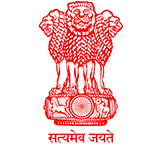Data Visualisation in Accounting for Smarter Presentation
By – Ms. S. Stefi, Deputy Director, Branch Air Force Audit, Benguluru
The greatest value of a picture is when it forces us to notice what we never expected to see.
―
John Tukey
The article aims to illuminate the scope of data visualisation in Accounting Reports.
Gone are the days when a reader tries to read the figures in lists and tables and sit to analyse the data he is given. Time places constraints; technology
provides better options like the latest data visualisation techniques, info graphs, etc. via which one can infer what one really needs to, just glancing at
the graphical representation of data. These visualisation tools try to make data speak to the eyes of the reader and convey the essence.
The Annual Accounts of the State Government comprise of Appropriation and Finance Accounts. While the Appropriation Accounts provide the accounts (both
voted and charged) of expenditure incurred in a financial year compared with the voted grants and charged appropriations passed by the legislature, the
Finance Accounts provide details of receipts and expenditure of the government including accounts of public debt, liabilities and assets in a given
financial year.
In 1999, the CAG of India decided to issue an annual publication called "Accounts at a Glance" in respect of Annual Accounts of the State Governments. The
preparation and submission of the 'Accounts at a Glance' is simultaneously done with the Annual State Accounts.
The 'Accounts at a Glance' is in the nature of a summary document aimed at providing the reader with a bird's eye view of the financial position of the
State Government. This document is particularly useful for policy makers, economic and social analysts, media and general public who may need to look at
financial data for comparison and analysis and decision making based on financial trends. In the directives issued by the CAG Headquarter office with
regard to the publication of the 'Accounts at a Glance' it has been specifically stated that contents should be illustrated using graphics and illustrations, which should be need-based and not of ornamental nature.
Thus use of data visualisation in Accounting Reports such as these is immense and less explored.
The department has already started exploring the data visualisation tools to better the audit reports, mainly for the data representation in the audit
reports. The writer feels that the same can be applied in the domain of accounts too. As Finance Accounts needs to be formal and not be messy with graphs and charts, to start with, 'Accounts at a Glance' is the best option.
New ideas
• The tool we use currently to the show the variance of data over time and comparison is a line chart or a bar graph. There are visualisation tools
which are more interactive, compact and capable of giving the sense of data more easily. For Eg: Stream Graphs [i] and Bubble Charts[ii].
• Data shown using 3 or 4 tables can be easily clubbed in a Nightingale Rose Graph[iii]. For example : a
nightingale rose graph can easily depict the expenditure across multiple departments over a number of years and the reader can compare and analyse the
expenditure across the years and across departments, which is not possible in tables and can be confusing in line charts.
• To depict composition(part to whole representation), we may use tree maps[iv]to avoid repetitive pie
charts and doughnut charts.
As an illustrative example, a Tree Map for Tax Revenue (Source: Accounts at a Glance 2013-14, Karnataka) is depicted below:
| Taxes on Commodities & Services |
Taxes on Income and Expenditure |
| Taxes on Property & Capital transactions |
The tree map below shows capital expenditure across various sectors in the State. Within one sector we can show a relevant department's expenditure too.
For example : just by looking onto the tree map, the reader will understand how much of total capital expenditure is spent on education within the social services which conveys how much significance the State is giving for education sector. This kind of visualisation helps it easier for the reader to capture the message within the data than when he scans through a table or a complicated line graph. (The map here is not proportionate to the data in 'Accounts at a Glance'. It is a crude example for tree map).
| Social Services |
Loans & Advances |
Economic Services |
| Education |
General Services |
• As we bring in visualisation, the writer feels that there is scope for redesigning the content also, in a way it can upgrade the 'Accounts at a Glance' to suit the current trends and visualisation tools we apply in the report can vary from state to state according to the relevance of that particular parameter for the State. For example : it is appreciated that the report gives information regarding the important fiscal parameters of the state (FRBM Act related too). However, it is felt that for every State, there can be some unique parameters influencing the overall financial situation, and there can be some areas which are specific to that particular State. For example : for a State like Chhattisgarh, the growth rate in revenue from mining, and the trend in expenditure over social sector schemes for tribals are important for a policy maker. For a State like UP or Bihar, the subsidies trend may be important. It is a suggestion that; may not be in the near future, but in the coming years ahead, we may innovate 'Accounts at a Glance' to a report which gives a clue to how efficiently the expenditure is planned and distributed to the State's specific needs.
The modifications in 'Accounts at a Glance' have to be done without meddling with the role of Report on State Finances. Just by giving additional State specific accounts related information, we are not conflicting with the role of SFR as SFR is an audit report. The benefit of data visualisation is that, sometimes it is not just giving data, it is taking the reader to what the writer actually intended to convey, without the reader knowing this. The writer completely agrees that accounts prepared should always be neutral (one of the GAAP standards is neutrality) i.e. accounts should always report information-figures and data but not any opinion on the data. Still, this kind of additional information will help the policy makers to understand where the State is. Basically it is spreading out the role of the Accounts domain of IAAD.
Way Ahead
• The department shall choose the data visualisation software that can cater to our needs for this smarter accounting.
• We need to provide sufficient training to our staff in utilising data visualisation tools effectively to representing various
accounts related information
• The Group Officers may be given training in at least one data visualisation software. This has to be included in the syllabus for Officer Trainees
too.
• We can as well provide real time visualisation in the soft copies of reports (stored in CDs/DVDs).
However it is desirable that we should keep in mind always the fact, that IT is a tool, a support and not the solution. The report (in the instant case,
Accounts at a Glance) should not end up as a photo album, creating more confusion and complexity. Visualisation has to be done only when and where it is
required. For this, solid knowledge in accounts is required, which the department's human resources are already endowed with and hence we can try to open
the window of data visualisation in this novel direction confidently.
[i]
Stream Graphs are used to show changes of different categories over time when there are many categories and these categories start and stop at different times. The height of each individual stream shape shows how the value of that stream has changed over time. The length of the stream shape shows its duration. Colours are often used to either show more detail about that category's quantitative value (on a sliding scale of shades) or to differentiate between different categories.
Source: http://seeingdata.org/taketime/inside-the-chart-stream-graph
[ii]
Bubble charts are extremely useful graphs for comparing the relationships between data objects in 3 numeric-data dimensions: the X-axis data, the Y-axis data, and data represented by the bubble size.
Source
: http://www.bubblechartpro.com/content/what_are_bubble_charts.php
[iii]
Nightingale Rose Charts are drawn on a polar coordinate system where each category or interval in data is divided into equal segments on the radial chart. It's the area, rather than the radius of a segment that represents its value.
Source
:http://www.datavizcatalogue.com/methods/nightingale_rose_chart.html
[iv]
Tree map is a space-constrained visualization of hierarchical structures. It is very effective in showing attributes of leaf nodes using size and colour coding. Tree map enables users to compare nodes and sub-trees even at varying depth in the tree, and help them spot patterns and exceptions.
Source :http://www.cs.umd.edu/hcil/treemap
|







